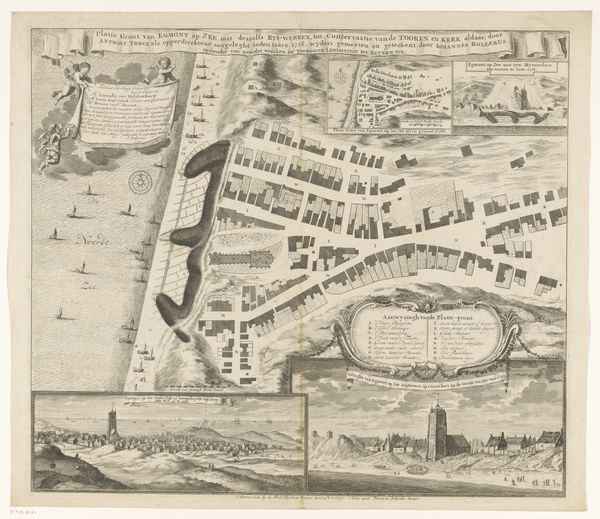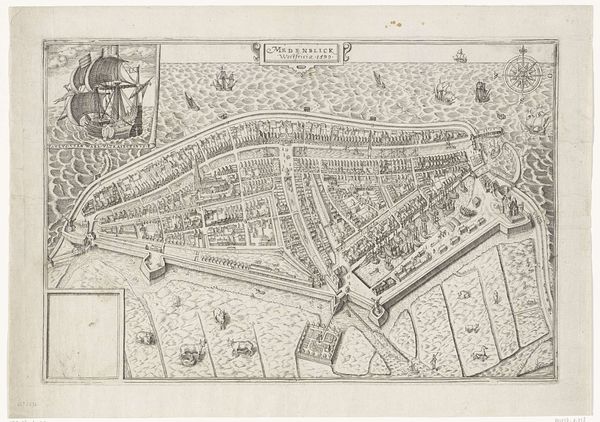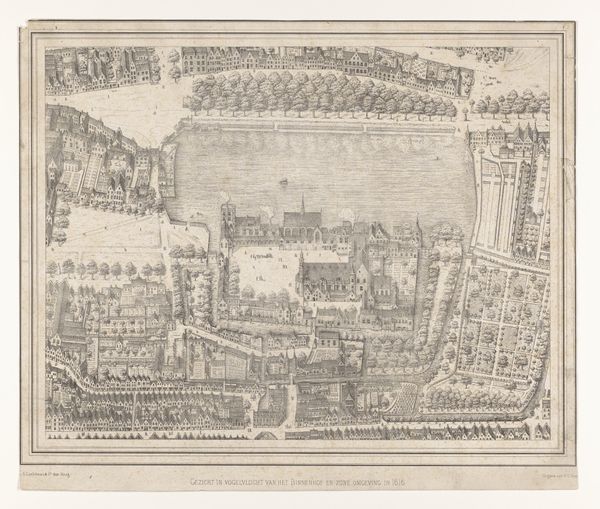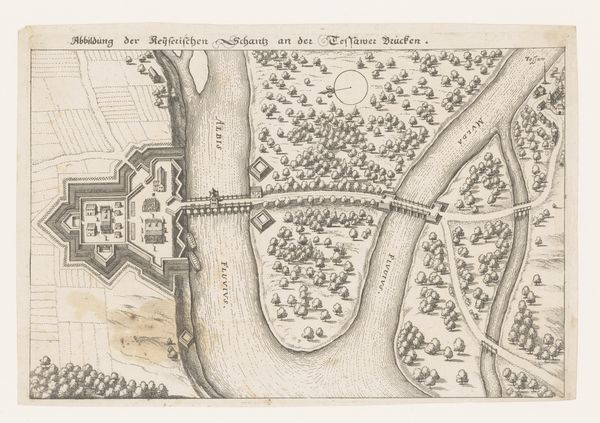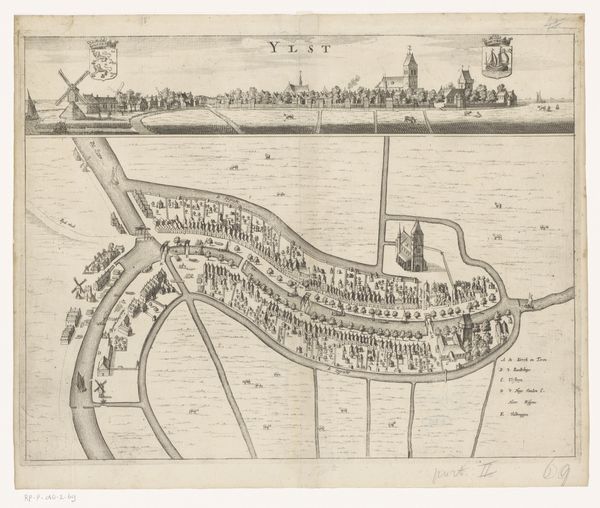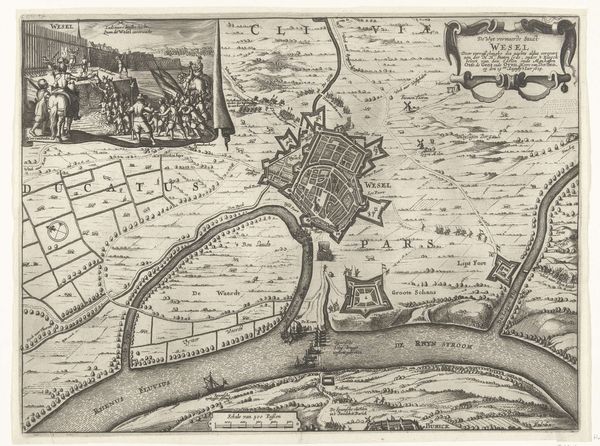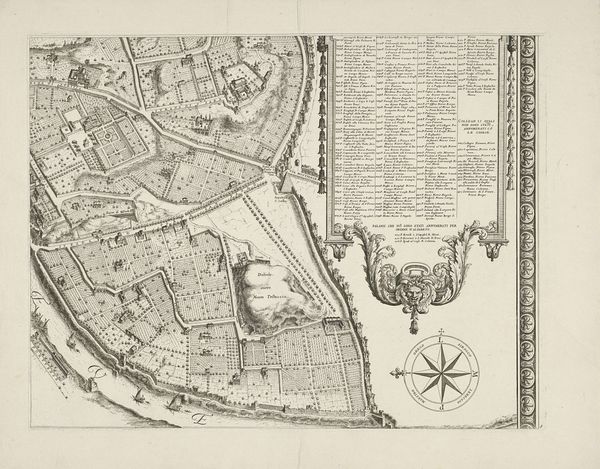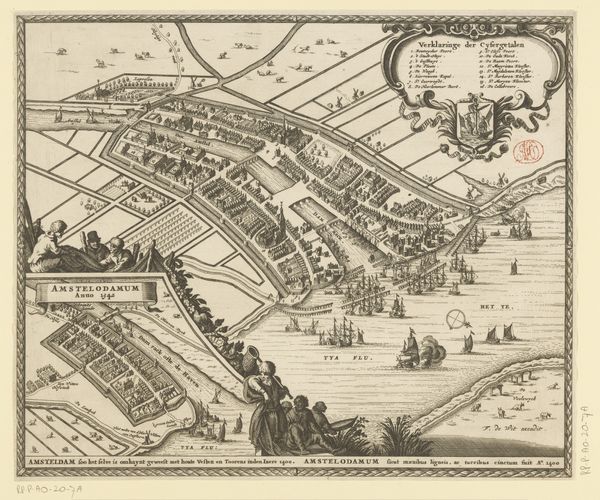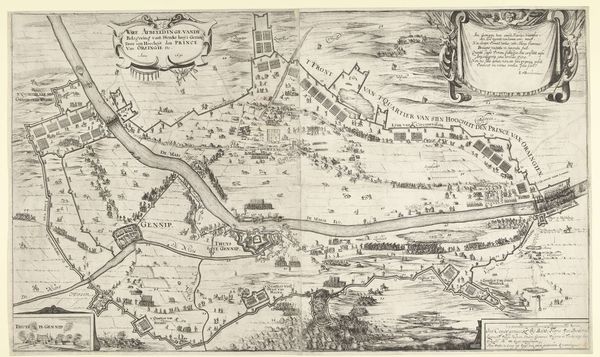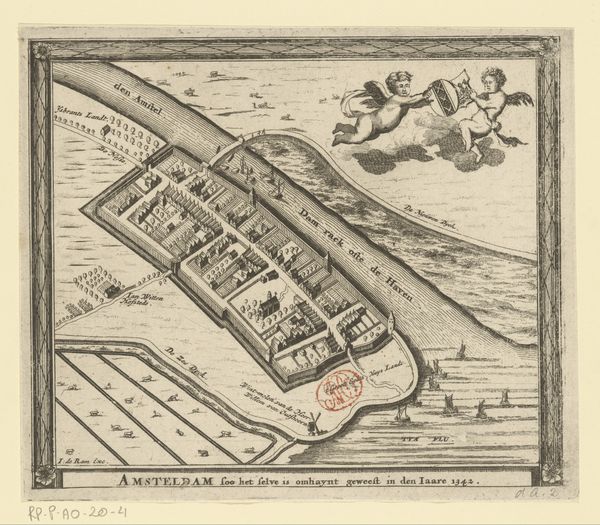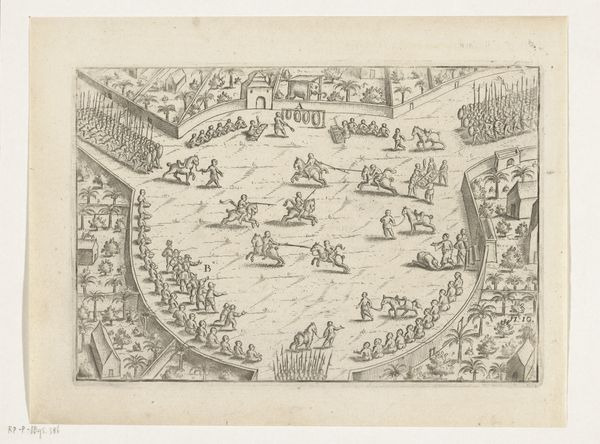
print, engraving
#
dutch-golden-age
# print
#
pen illustration
#
old engraving style
#
cityscape
#
engraving
Dimensions: height 175 mm, width 268 mm
Copyright: Rijks Museum: Open Domain
Johannes de Ram’s ‘Plattegrond van Overschie,’ etched in the late 17th century, presents a bird's-eye view of the Dutch landscape, abundant with symbols of civic pride and mercantile ambition. Dominating the scene, the coat of arms floats above the town’s name. The coat of arms, a symbol of identity and power, resonates across epochs. From ancient Roman shields to medieval heraldry, these emblems served to distinguish lineage and allegiance. Here, the arms embody Overschie's communal identity. The compass is another symbolic element that appears in the corners of the map. This is a symbol that recurs across time as an emblem for rational navigation, exploration, and discovery. Consider how such emblems tap into our collective memory. Symbols of authority and orientation evoke deep-seated emotions of belonging and purpose. Just as the compass guided explorers to new frontiers, the coat of arms anchors us to our ancestral roots, evoking a powerful sense of place. It is an instrument of wayfinding and an emotional wellspring, connecting us to the past and present. The motifs persist, adapted to new contexts, yet their underlying psychological resonance endures, reminding us of history's cyclical dance.
Comments
No comments
Be the first to comment and join the conversation on the ultimate creative platform.

